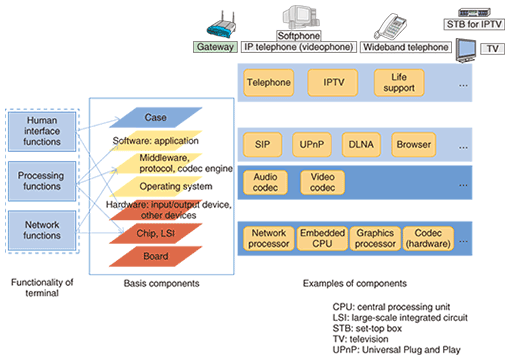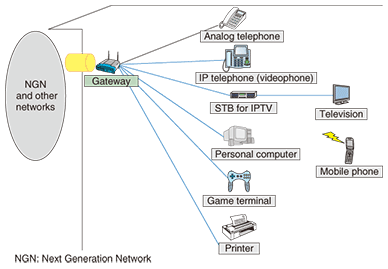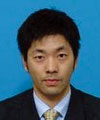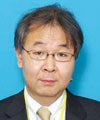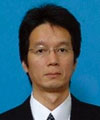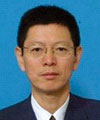 |
|||||||||||||
|
|
|||||||||||||
|
Feature Articles: Services for Hikari Era: Terminal Component Technologies Vol. 9, No. 6, pp. 1–5, June 2011. https://doi.org/10.53829/ntr201106fa1 Service and Terminal Component Technology Development Initiatives for the Optical Fiber Broadband Era (Hikari Era)AbstractIn the optical fiber broadband era (hikari era), which has just begun, optical fiber is being used to transmit large amounts of digital information at high speed. It enables the provision of a great variety of services to users and this variety will increase even more in the future. We introduce various research and development activities for terminal component technologies.
1. IntroductionThe functionalities of terminals can be divided into three broad types: human interface functions, processing functions, and network functions. Our main aim for terminal research and development (R&D) in the optical fiber broadband era (hikari* era), which has just begun, is to make use of communications media, freely handle multiple types of media, have various types of media processing, and exploit all of these fully for the provision of many services of various types. For example, while the conventional communications terminal, an analog phone, can transmit only 3.4-kHz sound, hikari-era terminals will support a diverse range of medium types such as photographs, video, and data at any time as well as a diverse range within each medium (e.g., wideband or multichannel sound, high-resolution images, and video). Furthermore, in addition to supporting person-to-person communications, terminals will also need to exchange various types of data with servers. Hikari-era terminals will provide various services using large amounts of various media over the network for person-to-person and person-to-server communication. 2. Terminal component elementsTerminal functions can be divided into human interface, processing, and network functions, but these are implemented in either hardware or software. Terminal component elements are shown in Fig. 1.
Interface functions are implemented by a combination of the terminal shape and mechanisms that terminals are equipped with, touch panels, displays, handsets, keys, and other input/output devices. Network functions can be implemented using software or with a network processor to utilize the high speed of hardware. In particular, in the hikari era, it must be possible to process high-volume media such as video (consisting of streams of large packets) without excessive delay and fixed-length packets such as VoIP (voice over Internet protocol) packets (within a delay of a few milliseconds, without any packet loss). Because of this, network processor technology able to process packets at high speed is very important. The Feature Article in this issue entitled “Network Processing Technology for Terminals Enabling High-quality Services” [1] provides an introduction to these technologies. Each processing function in a terminal is implemented with middleware and application software, but for sound, video, and other media processing in particular, the codec (coder/decoder) technology is very important. To implement a VoIP service with wideband sound, one must use appropriate audio codecs and input/output devices such as microphones and speakers to transmit and receive sound. Technology components for new hikari-era VoIP terminals that surpass ordinary 3.4-kHz analog sound are introduced in the article “Voice Processing Technology for Realistic-quality Voice and Rich Telecommunication Services” [2]. Moreover, in addition to audio codecs, video codecs are also important for communication by means of video. There are many possible applications for video codecs, from realtime bidirectional communication such as video-telephony to services distributing video from a server. Comfortable communication by video telephony and other bidirectional applications requires a low delay and high video quality, while services that distribute a variety of video content, such as IPTV (Internet protocol television) should have high video quality and a low distribution cost. The characteristics of the codec used must match the application. Video codec technologies for distributing video are described in the article “Software H.264 Encoder Engine for Online Video Delivery Service Cost Reduction” [3]. To enable the handling of various types of media, codecs alone are not enough. Also important are middleware, such as session initiation protocol (SIP) for call control functions and software based on Digital Living Network Alliance (DLNA) protocols for handling media, and specifications for how the codecs and middleware will be used when terminals communicate with each other. Specifications governing communications between terminals are called teleservice specifications. It is necessary to define the usage of low-layer network attributes as well as high-layer attributes available between terminals equipped with these network functions when they connect to each other. With ISDN (integrated services digital network), the main teleservices included telephony, fax, videotelephony, and telex, but in the hikari era, services will freely allow switching between various types of media in addition to the conventional ISDN teleservices. The article “Visual Softphone: New Ways to Communicate” [4] introduces the visual softphone as a terminal for the hikari era. The visual softphone can communicate using various types of data including photographs and video, while also handling voice and videophone communication. The technical development of these various terminal components, from hardware to middleware, is becoming more important for achieving rich new services. 3. Home environmentsIn the hikari era, how will the various terminals be placed in the home and how will they be connected together? In the analog and ISDN eras, homes were wired with telephone and ISDN cables to connect telephones, but in the hikari era, optical fiber cable will be brought right to the home and connected to a home gateway, and various types of terminals will be connected to this home gateway. An example of terminal connections in a home environment is shown in Fig. 2. Multiple terminals will be connected and multiple types of media (video, sound, data, etc.) will be used over IP channels in addition to voice. Various existing IP communications technologies can also be utilized, from existing Ethernet cables to various wireless technologies (IEEE 802.11a, b, g, n, etc.), power-line communications, coaxial communications, etc.
With the increase in the number of choices for users and the ability to wire a home according to conditions there, it is becoming increasingly difficult to maintain the home environment. Wiring for conventional analog telephones or ISDN was simple, but in the hikari era, each room in a house can hold various types of terminal and each can be connected in various ways, creating a multitude of possibilities. Conventional office local area networks could be managed using protocols such as simple network management protocol (SNMP), but there is no standard management protocol like SNMP for home devices. This makes it difficult to determine what devices are connected to the network and the state of each device. Even though protocols such as Universal Plug and Play (UPnP) and DLNA provide some information about devices on the network, not all devices support these protocols, and the information they provide is limited. Therefore, we are developing a home network diagnosis tool [5] that makes it easier to obtain information about what devices are present and whether or not they are operating normally at the IP level by analyzing packets flowing between them on the network. This tool will enable engineers to detect problems in home networks and repair them quickly. Expert knowledge is generally required for network maintenance, and it is difficult to find highly skilled maintenance workers. This technology makes maintenance much easier by providing support functions such as rule-based interactive diagnostics and an easy-to-understand network map of connected devices designed for maintenance people with less experience. 4. Concluding remarksWe have provided a simple introduction to the state of R&D activities for terminal component technologies for the hikari era and home environments where these various terminals will be used. In the future, we will continue to conduct R&D of various services and terminal component technologies to promote the spread of these terminals in the hikari era. References
|
|||||||||||||








